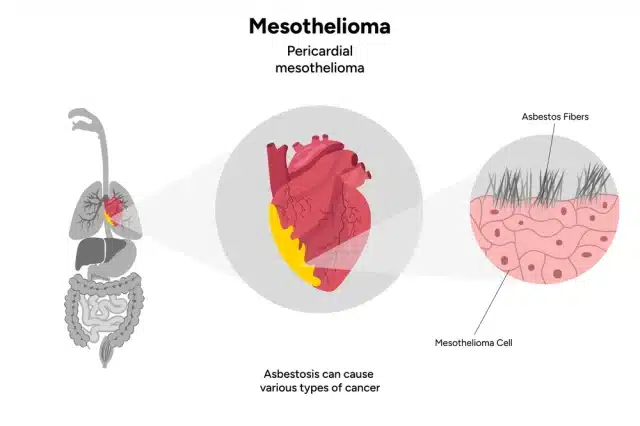With the rise of e-cigarettes, commonly known as vapes, consumers have a wide range of choices when it comes to making their purchase. Whether you’re a newcomer or an experienced vaper looking to upgrade, navigating the world of e-cigarettes can feel overwhelming. This guide breaks down the essential factors to consider, helping you find the right product based on your needs, preferences, and lifestyle.
What is an E-Cigarette?
An e-cigarette uses battery power to heat a liquid (often called e-liquid or vape juice) to create vapor. Unlike traditional cigarettes, which involve burning tobacco, e-cigarettes use this vaporization process to deliver nicotine or other substances. For those new to vaping, starter vape kits like the 10 Motives Compatible Starter Kits offer a convenient and beginner-friendly way to explore this alternative.
The liquid used in e-cigarettes typically contains nicotine, flavorings, and a combination of propylene glycol (PG) and vegetable glycerin (VG). The ratio of these ingredients can impact the vaping experience, influencing factors like throat hit, vapor production, and flavor intensity.
Different Types of E-Cigarettes
There are various types of e-cigarettes on the market, each designed for different users. Understanding the options available will help you make an informed decision.
- Cigalikes
Cigalikes are the most basic form of e-cigarettes, designed to mimic the look and feel of traditional cigarettes. These devices are usually pre-filled with e-liquid and often come in disposable or rechargeable formats.
Best for: New vapers or those who prefer something small and simple.
Pros:
- Compact and portable
- Easy to use, no complicated settings
- Closely mimics the cigarette experience
Cons:
- Limited battery life
- Fewer flavor options
- Lower vapor production
- Pod Systems
Pod systems are small, sleek devices that use pre-filled or refillable pods. They are typically more powerful than cigalikes but still compact and portable.
Best for: Beginners or vapers who prefer convenience without sacrificing performance.
Pros:
- Easy to use, with simple mechanisms
- Portable design, easy to carry around
- Some models offer adjustable settings for more control
Cons:
- Battery life can still be a limiting factor
- Pods may be more expensive than other refilling methods
- Vape Pens
Vape pens are larger than cigalikes and pod systems, offering a more robust vaping experience. These devices typically feature a refillable tank and replaceable coils, providing better vapor production and more control over your experience.
Best for: Intermediate vapers looking for more control and customization.
Pros:
- Larger battery for longer usage
- More control over settings, including wattage and temperature
- Better flavor and vapor production
Cons:
- Bulkier than pod systems or cigalikes
- Requires maintenance, such as replacing coils
- Box Mods
Box mods are the most advanced type of e-cigarettes, offering the highest level of customization. These devices allow vapers to adjust wattage, temperature, and even the type of coils used. With larger batteries and refillable tanks, box mods provide an enhanced vaping experience.
Best for: Experienced vapers looking for maximum control and performance.
Pros:
- Superior vapor and flavor production
- Fully customizable settings
- Larger battery capacity
Cons:
- Bulky and not as portable
- More complex, with a steeper learning curve
Key Considerations When Buying an E-Cigarette
When choosing the right e-cigarette, several factors come into play. These include your experience level, preferences, and specific needs as a vaper.
- Nicotine Levels
One of the biggest considerations is the nicotine content of the e-liquid. Nicotine levels are typically expressed in milligrams per milliliter (mg/ml). Here are the most common levels:
- 0 mg/ml: For vapers who want to enjoy vaping without nicotine.
- 3 mg/ml: A very low nicotine level, typically for light smokers.
- 6 mg/ml: A common level for moderate smokers.
- 12 mg/ml and above: Higher nicotine levels for heavy smokers transitioning to vaping.
Choose a nicotine strength that matches your smoking habits to ensure you get the right satisfaction from your e-cigarette. Many users find it easier to gradually reduce nicotine levels over time as they adjust to vaping.
- E-Liquid Flavors
One of the major draws of e-cigarettes is the wide variety of available flavors. There’s something for every taste, from traditional tobacco and menthol to fruit, dessert, and candy options. Consider starting with a flavor that closely resembles your favorite cigarette brand, then experiment with other flavors as you get more comfortable with vaping.
Keep in mind that flavor preferences may change over time, so it’s a good idea to buy smaller bottles of e-liquid until you find the one that works best for you.
- PG/VG Ratio
The propylene glycol (PG) and vegetable glycerin (VG) ratio in e-liquids affects the overall vaping experience. Higher PG ratios provide a stronger throat hit, similar to traditional cigarettes, while higher VG ratios offer more vapor production and a smoother inhale.
- High PG: Suitable for those who prioritize throat hit over vapor production.
- High VG: Better for those looking for thicker vapor clouds and a smoother vape.
Most e-liquids have a balanced mix of PG and VG, but some vapers may prefer higher levels of one over the other. Experimenting with different ratios can help you find your ideal combination.
- Battery Life
Battery life is crucial for an uninterrupted vaping experience. Smaller devices like cigalikes and pod systems may need frequent recharging, while larger vape pens and box mods typically have longer-lasting batteries. If you vape frequently throughout the day, opting for a device with a larger battery or carrying a backup may be a smart choice.
- Ease of Use
Not all e-cigarettes are created equal when it comes to ease of use. If you’re a beginner, it’s best to start with something simple, like a cigalike or pod system. These devices typically have fewer settings and require minimal maintenance. Advanced vapers, however, may appreciate the added control and customization options that box mods and vape pens offer.
Safety and Regulations
It’s important to purchase e-cigarettes and e-liquids from reputable sources to ensure they meet safety standards. Cheaper devices from unverified sellers can pose risks, such as battery malfunctions or unsafe materials. Many countries have strict regulations surrounding the sale of e-cigarettes, including product labeling, nicotine content limits, and advertising rules.
Look for products that are compliant with local laws and always follow the manufacturer’s safety instructions.
Making the Right Choice
Choosing the right e-cigarette comes down to your personal preferences and how you intend to use the device. Here’s a quick summary:
- For beginners, start with a cigalike or pod system for ease of use and portability.
- For intermediate users, vape pens offer a balance of power, control, and affordability.
- For experienced vapers, box mods provide maximum customization and performance.
Price Considerations
The price of e-cigarettes varies depending on the type and features. Cigalikes and pod systems tend to be the most affordable, while box mods are often on the higher end due to their advanced functionality. Keep in mind that ongoing costs, such as e-liquids and replacement parts, should also factor into your decision.
Conclusion
With the wide range of e-cigarettes available today, there’s a device for every type of vaper. By considering your nicotine needs, flavor preferences, and how much control you want over your vaping experience, you can make an informed choice that will help you enjoy vaping while transitioning away from traditional smoking.
If you’re new to vaping, start with something simple, and as you gain experience, explore more advanced options. Always prioritize safety and quality when making your purchase, and you’ll find that vaping can be an enjoyable and customizable experience.










